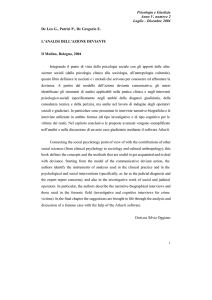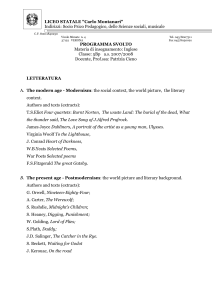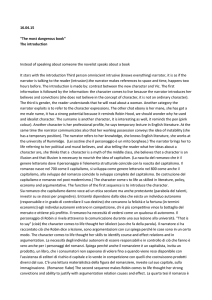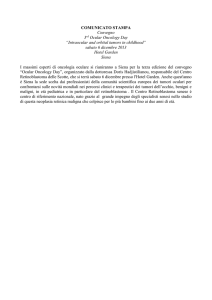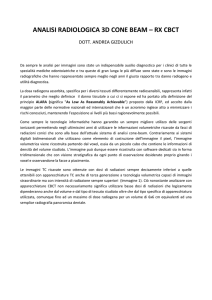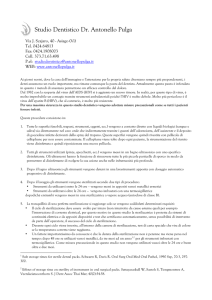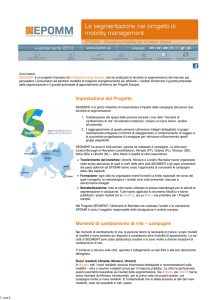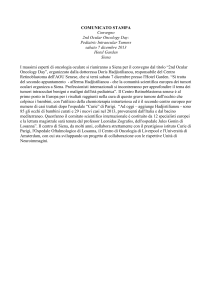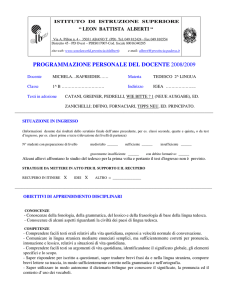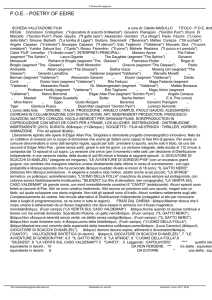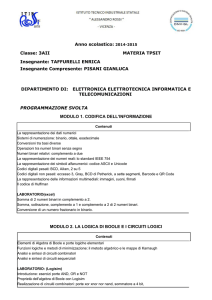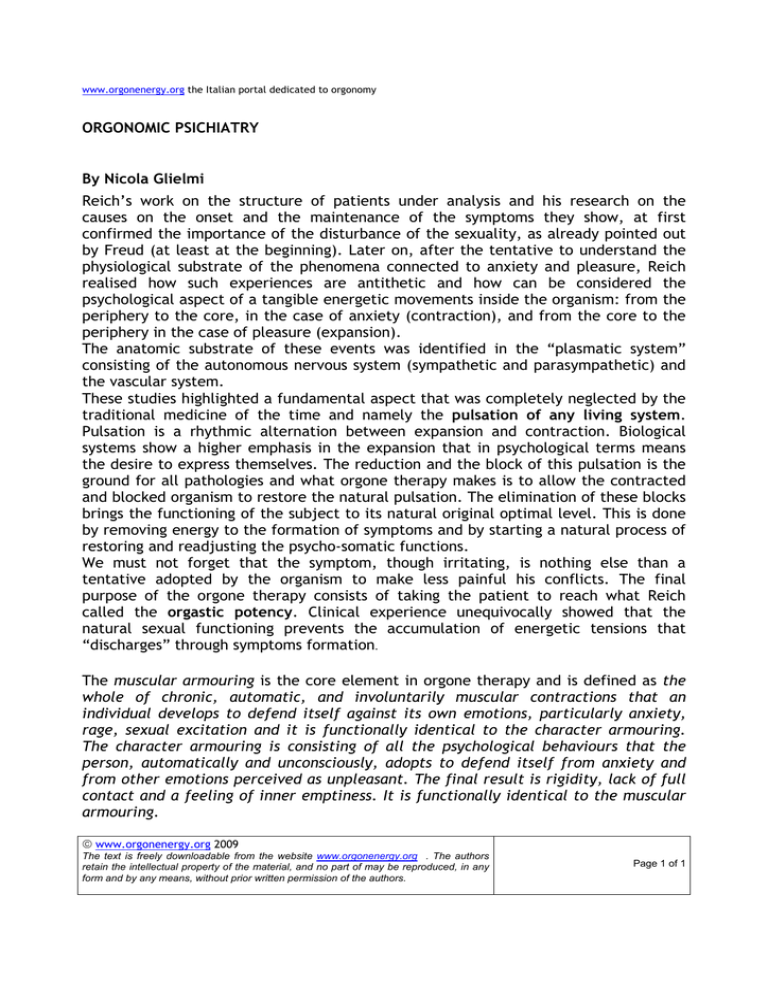
www.orgonenergy.org the Italian portal dedicated to orgonomy
ORGONOMIC PSICHIATRY
By Nicola Glielmi
Reich’s work on the structure of patients under analysis and his research on the
causes on the onset and the maintenance of the symptoms they show, at first
confirmed the importance of the disturbance of the sexuality, as already pointed out
by Freud (at least at the beginning). Later on, after the tentative to understand the
physiological substrate of the phenomena connected to anxiety and pleasure, Reich
realised how such experiences are antithetic and how can be considered the
psychological aspect of a tangible energetic movements inside the organism: from the
periphery to the core, in the case of anxiety (contraction), and from the core to the
periphery in the case of pleasure (expansion).
The anatomic substrate of these events was identified in the “plasmatic system”
consisting of the autonomous nervous system (sympathetic and parasympathetic) and
the vascular system.
These studies highlighted a fundamental aspect that was completely neglected by the
traditional medicine of the time and namely the pulsation of any living system.
Pulsation is a rhythmic alternation between expansion and contraction. Biological
systems show a higher emphasis in the expansion that in psychological terms means
the desire to express themselves. The reduction and the block of this pulsation is the
ground for all pathologies and what orgone therapy makes is to allow the contracted
and blocked organism to restore the natural pulsation. The elimination of these blocks
brings the functioning of the subject to its natural original optimal level. This is done
by removing energy to the formation of symptoms and by starting a natural process of
restoring and readjusting the psycho-somatic functions.
We must not forget that the symptom, though irritating, is nothing else than a
tentative adopted by the organism to make less painful his conflicts. The final
purpose of the orgone therapy consists of taking the patient to reach what Reich
called the orgastic potency. Clinical experience unequivocally showed that the
natural sexual functioning prevents the accumulation of energetic tensions that
“discharges” through symptoms formation.
The muscular armouring is the core element in orgone therapy and is defined as the
whole of chronic, automatic, and involuntarily muscular contractions that an
individual develops to defend itself against its own emotions, particularly anxiety,
rage, sexual excitation and it is functionally identical to the character armouring.
The character armouring is consisting of all the psychological behaviours that the
person, automatically and unconsciously, adopts to defend itself from anxiety and
from other emotions perceived as unpleasant. The final result is rigidity, lack of full
contact and a feeling of inner emptiness. It is functionally identical to the muscular
armouring.
© www.orgonenergy.org 2009
The text is freely downloadable from the website www.orgonenergy.org . The authors
retain the intellectual property of the material, and no part of may be reproduced, in any
form and by any means, without prior written permission of the authors.
Page 1 of 1
www.orgonenergy.org the Italian portal dedicated to orgonomy
Armouring dissolving, that is the purpose of orgone therapy, allows to reappropriate
those characteristics of gratification both in the sentimental and ordinary life.
Character types
In orgone therapy character diagnosis is carried out based on the erogenous area that
shows the main block. Being four the erogenous areas (ocular, oral, anal, and
genital), we have the following characters:
o ocular repressed characters: schizophrenia (and its subgroups catatonic,
paranoid, hebephrenic, and simplex. Each specific subgroup develops due to
the presence of a second block, subsequent to the ocular that, though grave,
still allows the development of the individual through the typical psycho-sexual
phases), and essential epilepsy; and whether unsatisfied it developes
voyeurism.
o oral character: full oral characters are hard to find. It is very frequent instead
the presence of secondary oral blocks, even very pronounced, in other
character types.
o anal repressed character: obsessive; whether unsatisfied it develops passivefemale (exclusively males) and masochistic.
o As far as the sphere of genital influence is concerned we have the phallic
(unsatisfied and repressed), paranoid, and maniac-depressive characters.
These form when the subject has remained fixed to the phallic phase, even in
presence of blocks in other segments, for instance the ocular in the paranoid
character, the oral unsatisfied in the maniac-depressive character; and the oral
repressed in the chronic depressive. The subject, that overcomes the phallic
phase and enters the genital phase but with a substantial anxious component
due to an unsolved Oedipus complex and hence still conflictual, develops an:
o hysteric character that in turn shows different nuances in case blocks are
present in one or more of the other segments, that are defined as pre-genital
(for instance the presence of a repressed oral block affects the whole picture
in a more or less marked depressive way, while a strong ocular block can cause
psychotic phenomena). The problem represented by the presence of different
blocks, from the orgonomic point of view, is due to the impediment that the
armouring exerted on the capacity of a full sexual gratification. It results,
© www.orgonenergy.org 2009
The text is freely downloadable from the website www.orgonenergy.org . The authors
retain the intellectual property of the material, and no part of may be reproduced, in any
form and by any means, without prior written permission of the authors.
Page 2 of 2
www.orgonenergy.org the Italian portal dedicated to orgonomy
inevitably an excess of energy that maintains alive the symptoms in a structure
that shows infant traits characteristic of the period where the block formed.
When a subject is able to reach a full sexual maturity, without particular
blocks and hence shows a full orgastic potency, with a consequent absence of
energetic stasis and infant traits, is defined a genital character. The true
genital character can be considered an ideal that can not be found in the
reality, while who is able to maintain its own orgastic potency, notwithstanding
the inevitable vicissitudes, problems and blocks encountered during the various
phases of the development, can be defined a functional genital character.
The structure of the armouring
Reich, after several years of work, found out the armouring is composed of seven
segments that subdivide the body and destroy the unitariness of its functioning. Each
segment has specific characteristics even though exerting a reciprocal influence. The
seven segments are the following:
o ocular
o oral
o cervical
o thoracic
o diaphragmatic
o abdominal
o pelvic
The ocular segment. It is the segment that includes the brain devoted to the
coordination of all the vital functions. The influence of all the psychotherapies are
addressed to this level, included the character analysis.
The oral segment. It includes the mouth, chin, throat, and the occipital musculature.
It contains very intense and old emotions such as angry biting, eagerly sucking and
shouting.
The cervical segment. It includes the superficial and deep musculature of the neck
and the tongue. It blocks the anger and the crying and confers a proud aspect, of
separation from the rest of the body (emotions).
© www.orgonenergy.org 2009
The text is freely downloadable from the website www.orgonenergy.org . The authors
retain the intellectual property of the material, and no part of may be reproduced, in any
form and by any means, without prior written permission of the authors.
Page 3 of 3
www.orgonenergy.org the Italian portal dedicated to orgonomy
The thoracic segment. It appears always in inspiratory position, kept up,
accompanied by the incapacity of a full and natural expiration. Blocked emotions in
this segment are agonizing crying, burning desire, and wild anger.
The diaphragmatic segment. It includes the stomach, the liver, and the solar plexus.
It produces lordosis of the vertebral column. The diaphragmatic movement is blocked
and the functioning of the organs is compromised.
The armouring of the abdominal segment is due to the spastic contraction of the
anterior rectum and transverse musculatures and, on the back, by the low insertion of
the great dorsal and by the nearby muscles. The muscles are often stiffness and very
sensible.
The pelvic segment. It includes practically all the muscles of the pelvis, the gluteus,
the anus, and the genitals. The pelvis appears rigid, and without life. Any type of
pathology on the organs of this part develops after a chronic armouring.
In orgonoterapia la diagnosi caratteriale viene posta in funzione della zona erogena
che presenta il blocco principale. Essendo quattro le zone erogene - oculare, orale,
anale, genitale - avremo i seguenti tipi caratteriali:
o caratteri oculari repressi: schizofrenia (con i sui sottotipi catatonico,
paranoide, ebefrenico, simplex. Ogni specifico sottotipo si sviluppa in funzione
di un secondo blocco, successivo a quello oculare, che, per quanto grave,
consente comunque lo sviluppo dell'individuo attraverso le consuete fasi psicosessuali ), epilessia essenziale e insoddisfatti: voyeurismo.
o caratteri orali: i caratteri puramente orali sono molto rari, è invece molto
frequente la presenza di blocchi orali secondari, anche molto prominenti, in
altri tipi caratteriali
o -caratteri anali repressi: ossessivo e insoddisfatti: passivo-femminile
(esclusivamente maschile), masochistaì
per quanto riguarda la sfera d'influenza genitale si hanno:
o caratteri fallici (insoddisfatti e repressi) , paranoidi e maniaci-depressivi
quando il soggetto è rimasto fissato alla fase fallica, pur in presenza di blocchi
© www.orgonenergy.org 2009
The text is freely downloadable from the website www.orgonenergy.org . The authors
retain the intellectual property of the material, and no part of may be reproduced, in any
form and by any means, without prior written permission of the authors.
Page 4 of 4
www.orgonenergy.org the Italian portal dedicated to orgonomy
in altri segmenti - ad esempio l'oculare nel carattere paranoie, l'orale
insoddisfatto nel carattere maniaco-depressivo e l'orale represso ne cronico
depressivo. Il soggetto che supera la fase fallica ed entra in quella genitale ma
con una rilevante componente ansiosa dovuta ad un complesso edipico irrisolto
e quindi ancora conflittuale sviluppa un
o carattere isterico, che può, a sua volta, presentare delle sfumature diverse se
sono presenti blocchi in uno o più degli altri segmenti, che vengono definiti
pre-genitali.( ad esempio la presenza di un blocco orale represso colora il
quadro di valenze depressive più o meno accentuate, mentre un blocco oculare
grave può dare luogo a fenomeni psicotici). Il problema rappresentato dalla
presenza dei vari blocchi, dal punto di vista orgonomico, è dovuto
all'impedimento che la corazza così costituita esercita sulla capacità di
completa gratificazione sessuale. Ne risulta, inevitabilmente, un eccesso di
energia non scaricata che mantiene vivo il sintomo in una struttura che
presenta dei tratti infantili risalenti al periodo in cui il blocco si è formato.
Quando una persona riesce a raggiungere la piena maturità sessuale senza
particolari blocchi e che, pertanto, presenta la piena potenza orgastica, con
conseguente assenza di stasi energetica e di tratti infantili, viene definita
carattere genitale. Il carattere genitale vero e proprio è da considerarsi un
ideale non riscontrabile nella realtà, mentre chi, nonostante le inevitabili
vicissitudini, problemi e blocchi incontrati durante le varie fasi dello sviluppo,
è in grado di conservare la propria potenza orgastica viene definito carattere
genitale funzionale.
La struttura della corazza
Reich, dopo anni di lavoro, scoprì che la corazza si compone si sette segmenti, che
frammentano il corpo e ne distruggono l'unitarietà del funzionamento. Ognuno di
questi segmenti ha caratteristiche specifiche pur esercitando un'influenza reciproca. I
sette segmenti sono:
o oculare
o orale
o cervicale
o toracico
o diaframmatico
o addominale
© www.orgonenergy.org 2009
The text is freely downloadable from the website www.orgonenergy.org . The authors
retain the intellectual property of the material, and no part of may be reproduced, in any
form and by any means, without prior written permission of the authors.
Page 5 of 5
www.orgonenergy.org the Italian portal dedicated to orgonomy
o pelvico
Il segmento oculare . E' il segmento che contiene il cervello, deputato alla
coordinazione di tutte le funzioni vitali. L'influenza di tutte le psicoterapie si esercita
a questo livello, compresa l'analisi del carattere.
Il segmento orale comprende la bocca, il mento, la gola, la muscolatura occipitale.
Contiene emozioni molto intense ed antiche quali il mordere rabbioso, il succhiare
avidamente, il gridare.
Il segmento cervicale comprende la muscolatura del collo, superficiale e profonda e
la lingua. Trattiene rabbia e pianto e conferisce un aspetto altero, di distacco dal
resto del proprio corpo (emozioni)..
Il segmento toracico. Appare quasi sempre in posizione inspiratoria, tenuto alto,
accompagnata da incapacità di espirazione piena e naturale. Le emozioni trattenute
sono: pianto straziante, desiderio ardente, rabbia selvaggia..
Il segmento diaframmatico. Comprende lo stomaco, il fegato, il plesso solare e
produce lordosi della colonna vertebrale. Il movimento diaframmatico è bloccato ed il
funzionamento degli organi è compromesso.
La corazza del segmento addominaleè dovuta alla contrazione spastica dei muscoli
retti anteriori e dei traversi e, posteriormente, dall'inserzione bassa del gran dorsale
e dei muscoli vicini. I muscoli sono spesso incordati e molto sensibili.
Il segmento pelvico comprende praticamente tutti i muscoli della pelvi, i glutei, l'ano
ed i genitali. Il bacino appare rigido, senza vita. Ogni sorta di patologia a carico degli
organi di questo distretto insorge in seguito al suo corazzamento cronico.
© www.orgonenergy.org 2009
The text is freely downloadable from the website www.orgonenergy.org . The authors
retain the intellectual property of the material, and no part of may be reproduced, in any
form and by any means, without prior written permission of the authors.
Page 6 of 6

